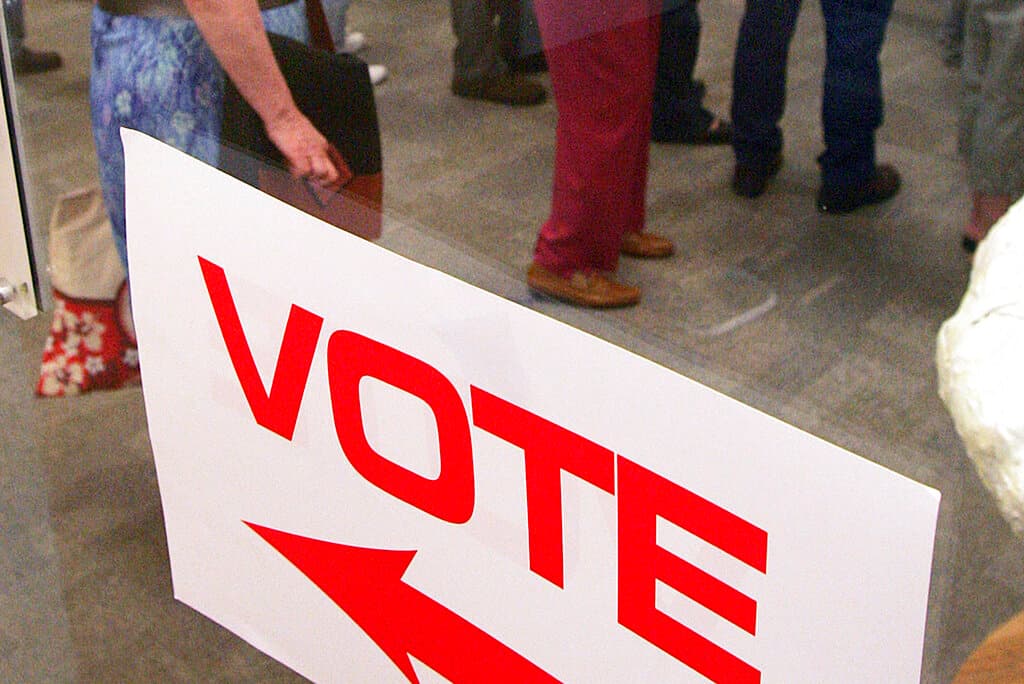Is It the Lazy Polling Syndrome or a Search for Simple Solutions?
While a big polling miss or an October surprise could be coming, beware of betting on one.

With the polls looking better for Democrats than anyone expected this year, commentators are warning of the potential for a polling miss. Although polls are far from perfect, it may be premature to start tossing this year’s numbers.
The 2016 and 2020 elections generated infamous polling misses with which pollsters and commentators are still grappling and that they are likely to study for years to come. The question is whether they are learning their lessons.
In 2016, FiveThirtyEight predicted a win for Secretary Clinton with 48.5 percent of the popular vote compared to President Trump’s 44.9 percent. In 2020, it predicted a victory for President Biden with an average margin of 8.4 points.
In reality, Mr. Trump won in 2016 with a solid margin in the Electoral College, albeit while losing the popular vote, and the 2020 election was much closer than the pollsters predicted, with about a 4.5-point margin of victory for Mr. Biden.
In 2018, however, the polls were much more accurate and the associate director of the University of Massachusetts Lowell Center for Public Opinion Polls, John Cluverius, says that this year might be more similar to 2018 than to 2020.
“I have yet to see an analysis of polling that convincingly shows that we are in a polling environment as bad as 2020 instead of one as good as 2018,” he says. “Why would a midterm year have the polling bias of a presidential election?”
He warns against simplistic remedies to possible polling errors, like applying the same errors from 2016 and 2020 to 2022’s numbers, in part because of fundamental differences in the elections and in part because most reputable pollsters have learned from past mistakes.
Mr. Cluverius does, though, caution that this doesn’t mean that polls will be perfect this year. He himself has talked about the variety of challenges that pollsters face this year, from abortion politics to distrust of the press.
Rather, he says that criticisms of polling should be more specific about focusing on the origin of the errors. In 2016 pollsters that weighted results by education had far more accurate results than pollsters that did not, and now the method is common practice in the industry.
Another issue is that there are some indisputable trends in the electorate that work in favor of Democrats. As the Sun reports, women are registering to vote in droves following the Dobbs decision, and there is evidence that Mr. Trump and his style of politics still loom over Republican voters.
Since the Dobbs v. Jackson decision reversing Roe v. Wade, pollsters have tended to underestimate Democratic support in races like the special elections in, say, New York’s 23rd district or Alaska’s 19th district or Alaska’s at-large district.
A recent Rasmussen Reports poll on Mr. Biden’s “red sermon” found that about one in five Republican voters agree with Mr. Biden that “Donald Trump and the MAGA Republicans represent an extremism that threatens the very foundations of our republic.”
If one in five Republicans were to decide not to vote for Trump-style candidates, that would be a disaster for the GOP. Yet most observers aren’t taking one data point and weighing it above all others. Instead, they are weighing many things, as Mr. Cluverious says, “systematically.”
“Polling misses happen in two directions, not just one,” he says. “They may happen in different pieces of political geography for different reasons.”
While the picture of polling accuracy and possible sources of error changes from state to state, there is a singular problem that has antagonized pollsters for years. With the public being less trustful of polling and pollsters, many have become less willing to respond to questions.
This makes it harder to get reliable results and could create a vicious cycle of decreasing reliability. The Sun caught up with a political scientist at Hamilton College, Philip Klinkner, to talk about this phenomenon and another problem for pollsters called “response bias.”
“It used to be 50, 60, 70 percent of people you asked would talk to you; now that percentage is infinitesimally small,” he tells the Sun. “There’s a big problem with response bias, too.”
While there are different facets to response bias, it’s useful to think of it as bias in polling results attributable to the type of person willing to answer polling questions. Voters are often more willing to answer pollsters when they get good news about their favorite candidate.
Mr. Klinkner says that this creates a phenomenon in political polling where “a lot of what people think are changes in a horserace are not changes in support of candidates but changes in terms of response bias.”
With all the ink spilled over the accuracy of polling, a question remains: What does this mean for expectations for November? The answer is perhaps not as flashy as the sirens and red lights flashing over possible polling errors, because many forecasters already have some amount of Democratic polling biased priced in.
Listeners of FiveThirtyEight’s politics podcast may recall that in describing how its Senate forecast model works, the editor-in-chief, Nate Silver, who makes the models, said as much.
“Our model,” he said. “Looking at historical norms eventually things will — Republicans will eventually win the popular vote by about 6 points.”
The associate editor of Sabato’s Crystal Ball, Miles Coleman, tells the Sun that “polling is like war, you’re always fighting yesterday’s battle.” He says that most forecasters assume Republicans will outperform polls on election days, at least for now. “Just talking to some of the other forecasters, we mentally add three to four points to the Republican score,” he said.
Other forecasters have already assumed that there will be some shift in favor of Republicans before Election Day, and in some races — in, say, Georgia or North Carolina — there already has been.
Yet with every passing day, the window for the GOP to rally slowly closes and Democrats still appear to be inching up in the generic ballot. While a big polling miss or an October surprise could be coming, it might not be worth betting on one.

